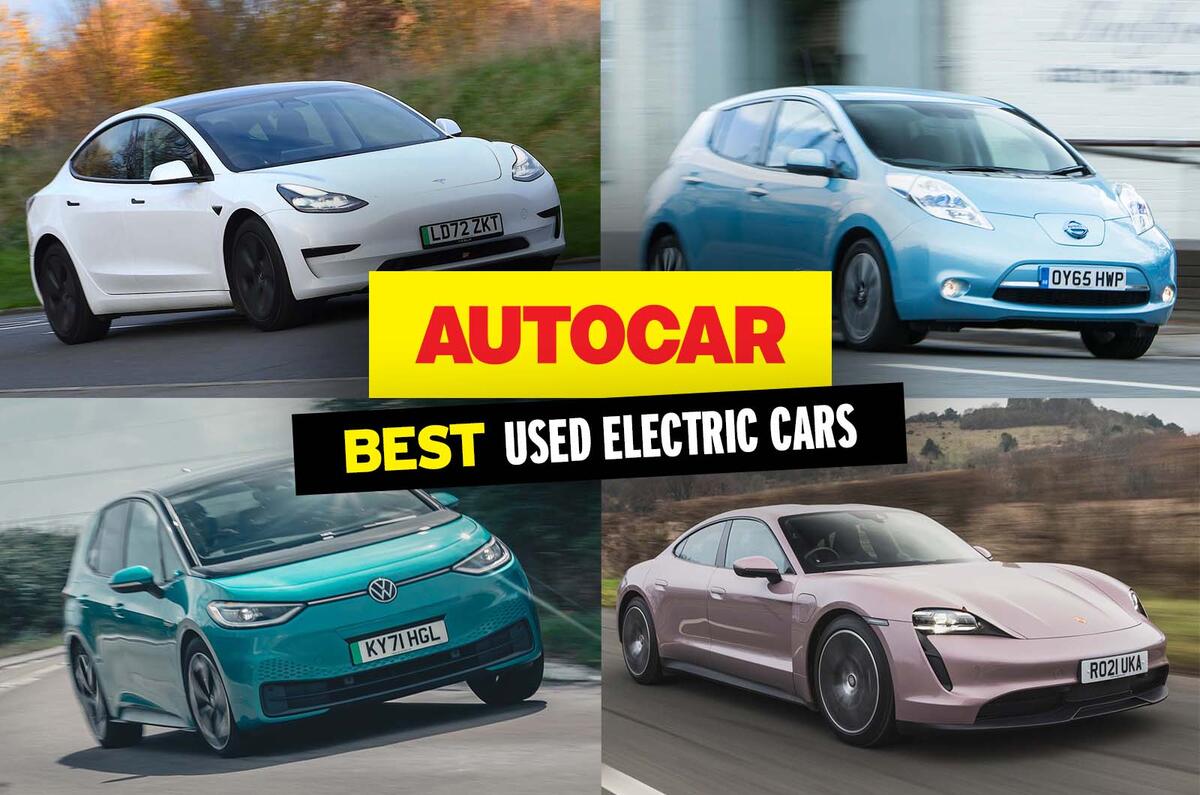The best used electric car bargains to snap up now
Prices of used electric cars are approaching parity with ICE. Which means now is the time to buy a used EV

News
8 mins read
25 February 2025
Share
If you’re looking to switch to an electric car, there’s never been a better time to bag the best used EV.
With a slump in demand for new EVs and uncertainty about the future legislation and technology, the value of second-hand EVs has crumbled. And while that’s bad news for the first owners, it’s great for those looking to pick a pre-owned bargain.
Even better, despite many buyers being wary about the potential pitfalls of EV tech, overall these cars are quite simple and therefore reliable and cheap to run. After all, an electric motor has only a handful of moving parts, compared with thousands in a combustion engine.
And while battery packs can be expensive to replace, the chances are the rest of the car will expire before the lithium ion cells need changing.
In fact, with sensible charging and care, many EV batteries will last for hundreds of thousands of miles.
Then there’s the savings in running costs, particularly if you can charge at home. And with the public charging network expanding all the time, range anxiety should soon become a thing of the past.
We think that the best used EV is the Porsche Taycan: it’s as dynamic and engaging to drive as its ICE counterparts, is super quick in all guises and is packed full of upmarket material and decent technology.
Sure, the Taycan is for the keener drivers among us, but there are a whole host of used electric cars, from urban runabouts to family hatchbacks.
Join us as we reveal our 10 favourite used EVs that will help you do your bit for the planet as well as your bank account.
1. Porsche Taycan
9
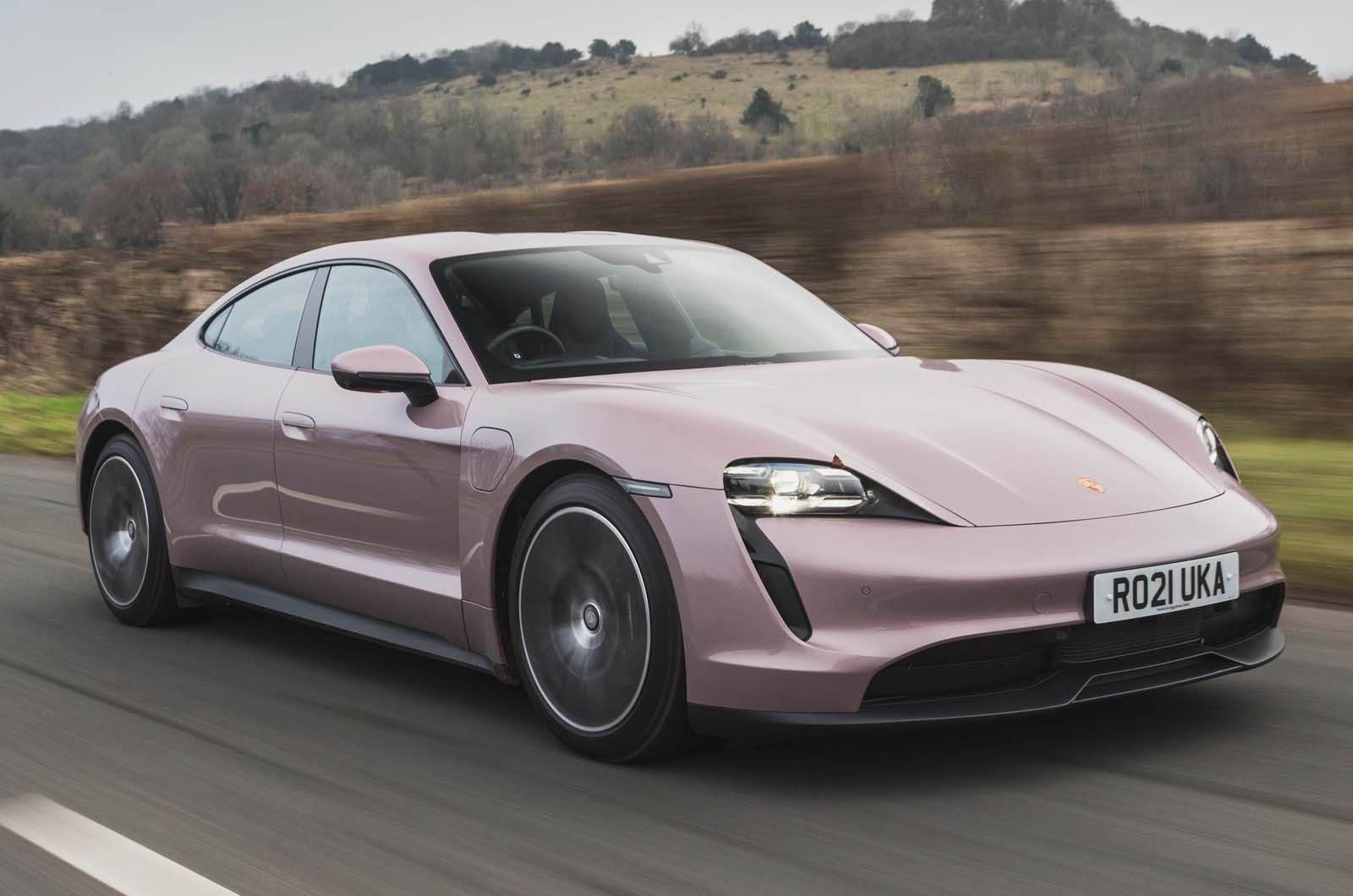
- Design9
- Interior9
- Performance10
- Ride & Handling10
- Costs9
Pros
Stunning performance and agility
Excellent ride and handling
Fast charging speeds
Cons
Range could be better
Repairs can be expensive
Not that roomy in the back
Few cars have been hit as hard by the slump in used EV prices as the Taycan, with examples of the Porsche losing more than half their value over the course of three years.
Yet despite the hefty depreciation, the sleek German saloon remains as remarkable as it has always been, especially with prices starting at just over £35,000.
Porsche’s development don Andreas Preuninger likes a car with just enough power to spin up its driven rear axle but not so much as to dominate its character. That’s precisely how the Performance Plus Taycan feels: enlivened by power but not ruled by it.
No EV is as good to drive, with sharp and engaging handling plus a scorching turn of pace, even in relatively modest 4S guise, which packs ‘just’ 563bhp.
When new, it had a claimed range of 288 miles and in real-world use you can expect an easy 250 miles, while an 80% charge using a 350kW charger takes less than half an hour.
Some owners have reported the odd electrical glitch and there has been the occasional battery failure, but the eight-year/100,000-mile warranty means you shouldn’t be hit with any big bills yet.
Read our Porsche Taycan review
Latest Reviews

Used Jaguar XF 2015-2024 review
8
Used Jaguar XF 2015-2024 review

MG S5 EV
8

Fiat 500e
6

Nissan Ariya Nismo
6

Suzuki Swift
8
Read our review
Car review

Porsche Taycan 2019-2024
Porsche’s world-beating EV now comes as a £70k, rear-driven Tesla Model S and BMW i4 rival. Should they worry?
Back to top
2. Tesla Model 3
8
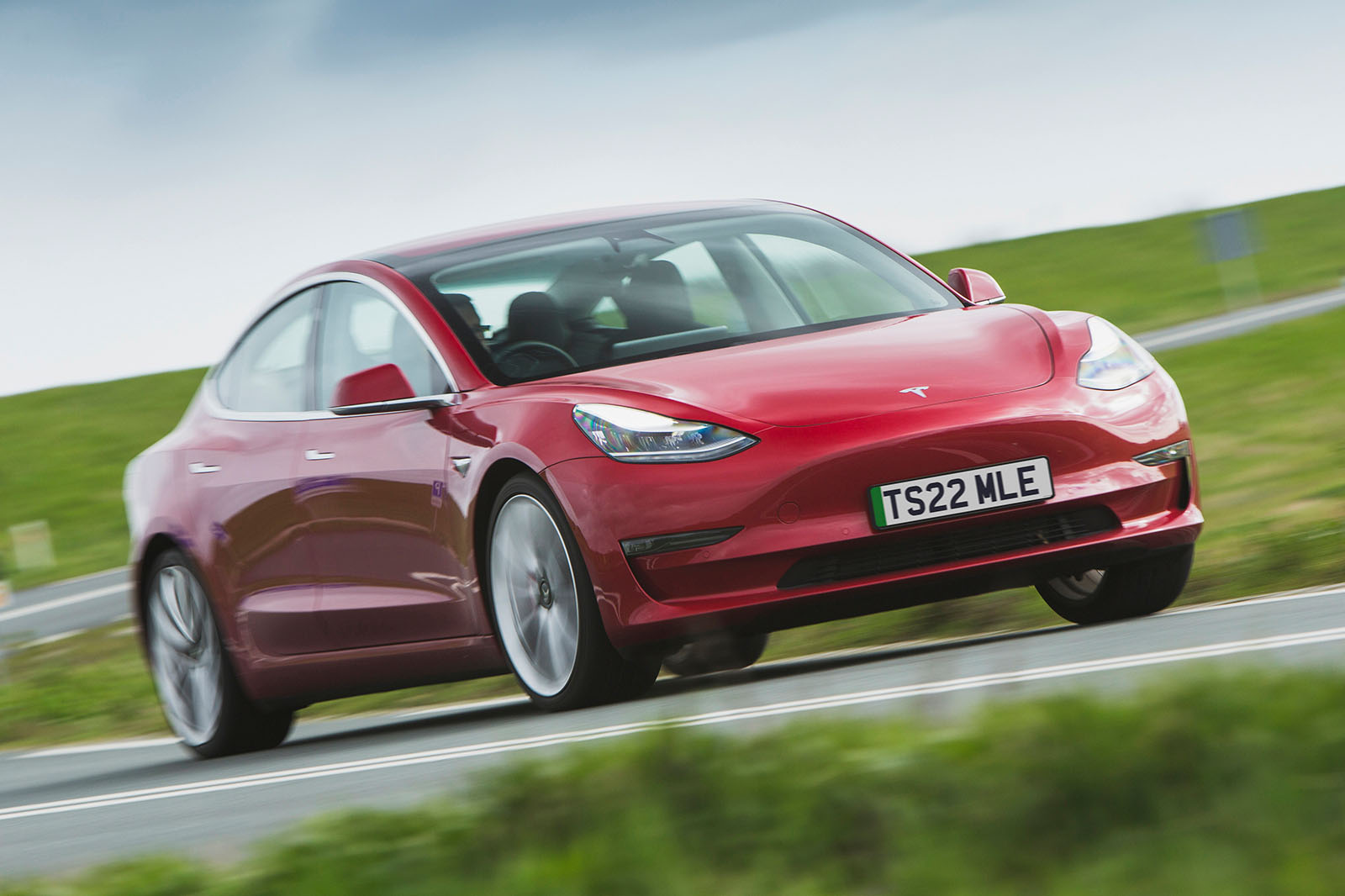
- Design8
- Interior7
- Performance9
- Ride & Handling8
- Costs9
Pros
Excellent range and efficiency
Tesla Supercharger network is easy and readily available
Good to drive
Cons
Build quality not up to class standards
Fiddly infotainment system
Low speed ride a little firm
This wouldn’t be a list of EVs without a Tesla somewhere in the mix. The arrival of a facelifted Model 3 has helped soften values for the old car, although in terms of looks and driving experience, there’s very little difference between the two.
That means composed and capable handling, a cushioned ride (some low-speed stiffness aside) and enough performance to keep most adrenaline junkies happy.
There’s a real sense of agility – you might call it nervousness until you get used to It – and body roll is controlled well, so the Model 3 exhibits an alert keenness to its handling.
Tesla’s use of the over-the-air software updates means many electrical niggles can be quickly resolved, although squeaky trim and inconsistent panel gaps betray the brand’s build quality issues.
That said, the Model 3 is generally reliable, while Tesla’s battery tech results in longer cell life than most.
You can pay as little as £10,000 for a standard car, but we would stretch to the extra £1500 or so the Long Range car demands, because it gets you a claimed range of 348 miles (just over 300 miles in reality).
Either way, you will get access to the excellent Tesla Supercharger network, which can handle a 10-80% charge in just 30 minutes.
Read our Tesla Model 3 review
3. Skoda Enyaq
8
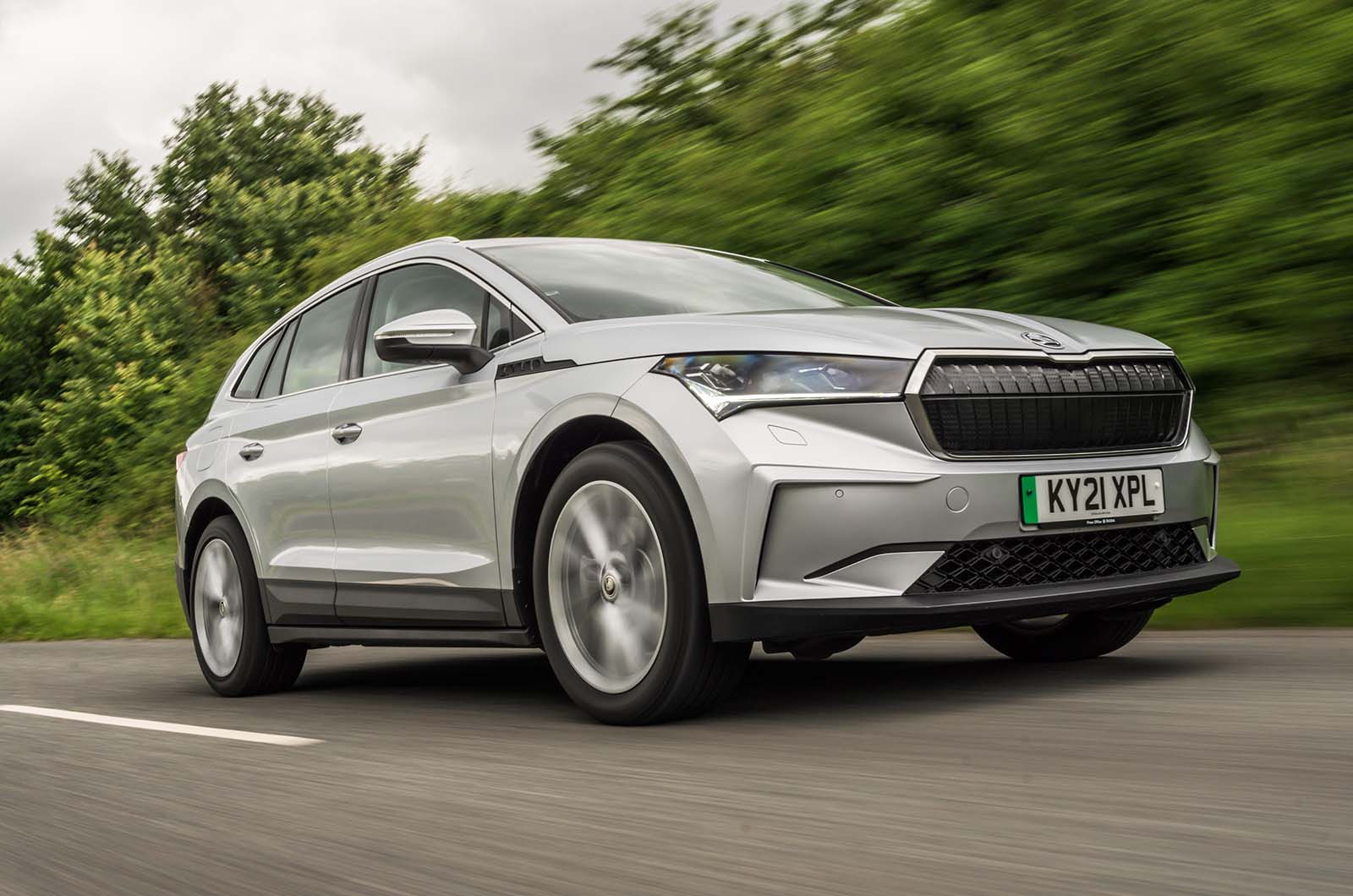
- Design8
- Interior9
- Performance8
- Ride & Handling8
- Costs9
Pros
Excellent value for money
Good to drive
Practical and spacious interior
Cons
A little too firm riding for its family car brief
Not the most exciting car to look at
Infotainment screen takes some getting used to
Practical, rangey and easy to live with, the Skoda Enyaq is a well-rounded EV that also offere excellent value for money in what is one of the most competitive electric car segements.
While many EVs in this list standout for one particular reason, the Skoda impresses in several key areas.
The ‘engine start’ button is largely redundant as the car senses someone in the driver’s seat and will move off when put in ‘D’. Annoyingly, leaning over to get something from the passenger footwell can turn the car off (not once moving, of course).
You’ll likely be drawn to its roomy and logically-configured cabin, confidence inspiring drive (thanks to its medium-firm setup) and broad mix of batteries and trims.
Around £12,000 (or slightly less for a well used, high mileage example) will get you into a 60 model with a 58kWh battery and 250-mile range.
You’re better off spending £2000-£3000 more on an 80 model, however, as it has a real world range closer to 300 miles, making it a more competent companion for longer motorway trips.
Its 201bhp motor is brisk, too, and provides more than enough zip, even if the performance fails to drum up much by way of entertainment.
For all-round appeal though, the Enyaq is a solid, sensible choice.
Read our Skoda Enyaq review
Back to top
4. Jaguar I-Pace
9
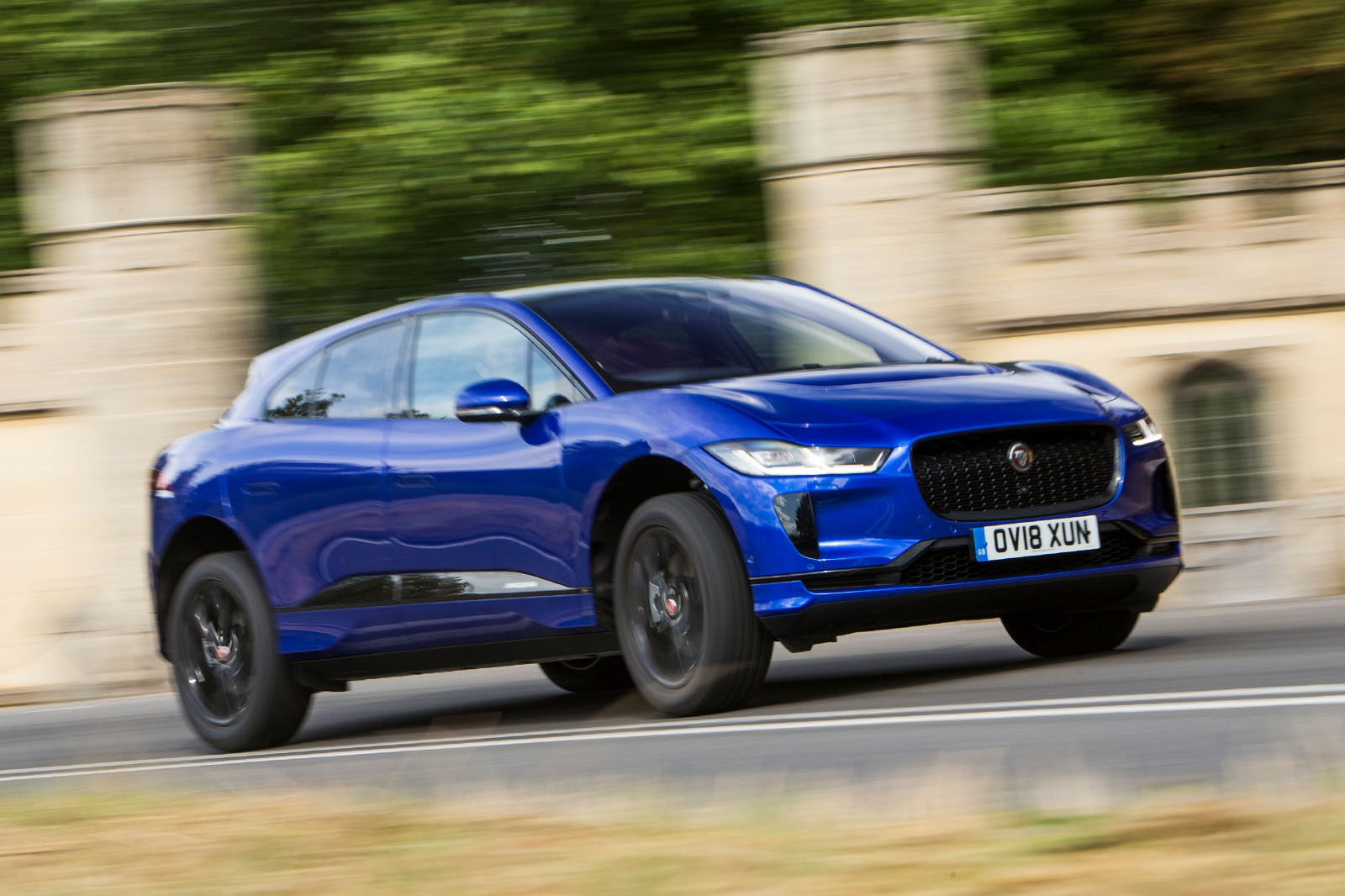
- Design9
- Interior9
- Performance9
- Ride & Handling8
- Costs7
Pros
Impressive blend of quality and comfort
Upper-crust interior
Hushed refinement
Cons
Average range, given the battery size
Doesn’t charge as quickly as rivals
Reliability is a mixed bag
One of our favourite EVs when new, the Jaguar I-Pace makes an equally compelling choice as a used car.
It has been around for several years now, which means prices of this fast and fleet-footed big cat have now dropped to £13,000.
The brake calibration here is conspicuously good, not least in how it lessens the regenerative effect when you roll off the brake pedal and onto the throttle.
For that outlay, you get a muscular 395bhp dual-motor, four-wheel-drive set-up, plus a hefty 90kWh battery that will give you a slightly disappointing usable range of around 250 miles (295 miles is claimed).
The upside is stonking straight-line pace and typical Jaguar dynamics that manage to blend invigorating handling with hushed refinement and a plush ride.
The I-Pace is also spacious and retains the British brand’s delightfully upper-crust interior ambience.
Overall quality is high, but electronic glitches have blighted the car from new, so check any potential purchase for onerous warning lights.
Read our Jaguar I-Pace review
5. BMW i3
7
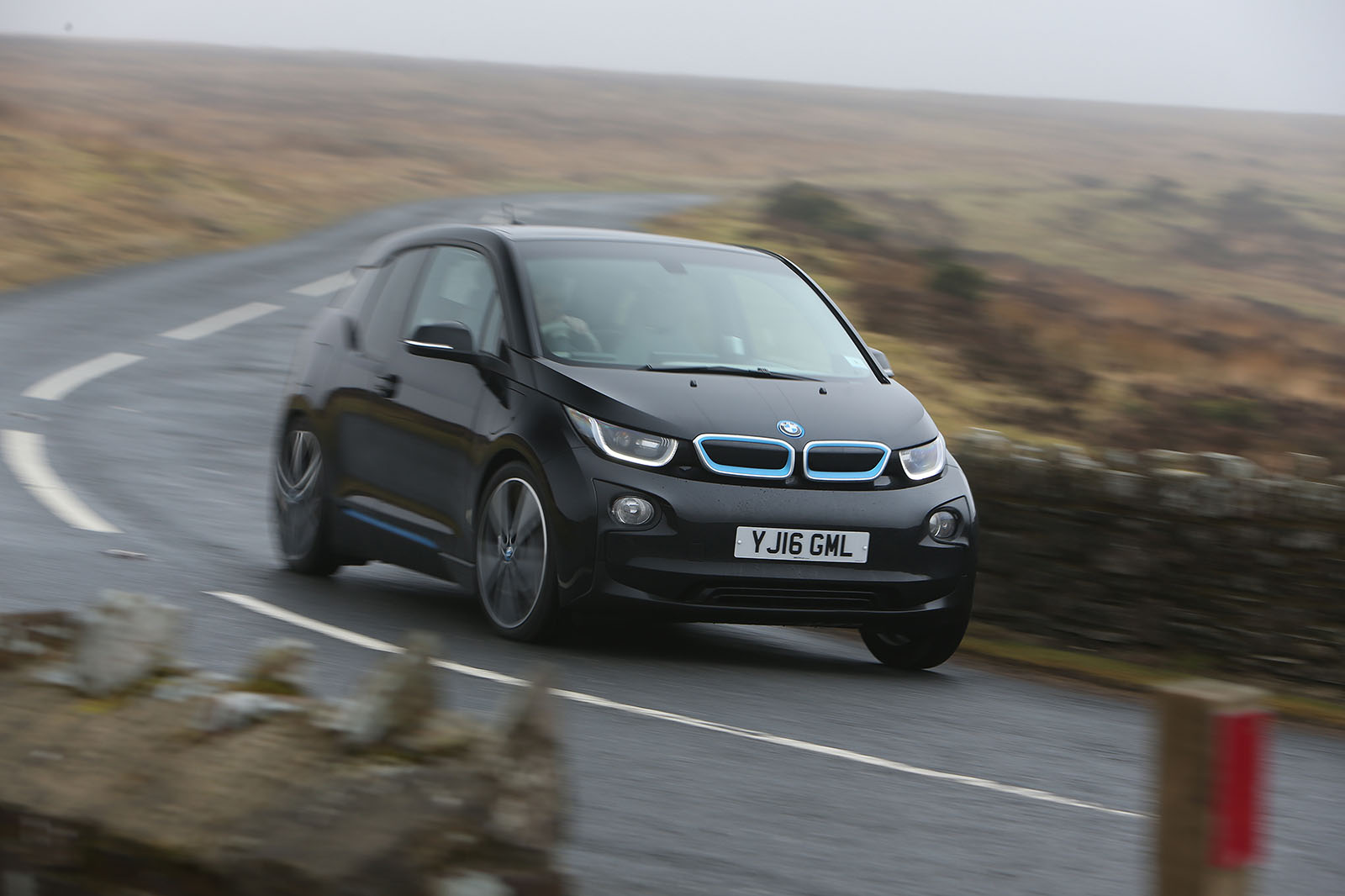
- Design9
- Interior8
- Performance8
- Ride & Handling8
- Costs7
Pros
Clever, lightweight design
Good to drive
Still turns heads today
Cons
Early cars have very short range
Strict four-seater
Impractical rear door arrangement
Arguably ahead of its time, the innovative BMW i3 is an EV that’s as interesting to own as it is cheap to run.
Underpinned by strong and light carbonfibre-reinforced-plastic architecture and clad in distinctive composite bodywork, the i3 is surprisingly light for an EV (it tips the scales at less than 1200kg).
Yes, the steering wheel has a blue line running round it. No, it’s not naff. It’s not Tron light bike cool, either. But in a climate of recycled chic, it chimes.
Its rear-mounted 168bhp motor serves up zippy performance while the skinny-tyred handling has enough baked-in BMW driver appeal to keep things fun.
Then there’s the boldly styled and neatly packaged interior, which is crammed with sustainably sourced materials.
This pioneering approach to the car’s design and engineering means that the i3 already has the makings of a modern classic, while prices starting at under £5000 make it an affordable choice too.
The only downside is that the small 21.5kWh battery on early cars means a realistic range of only 80 miles or so (BMW claimed 100 miles).
Read our BMW i3 review
Back to top
6. Mazda MX-30
7
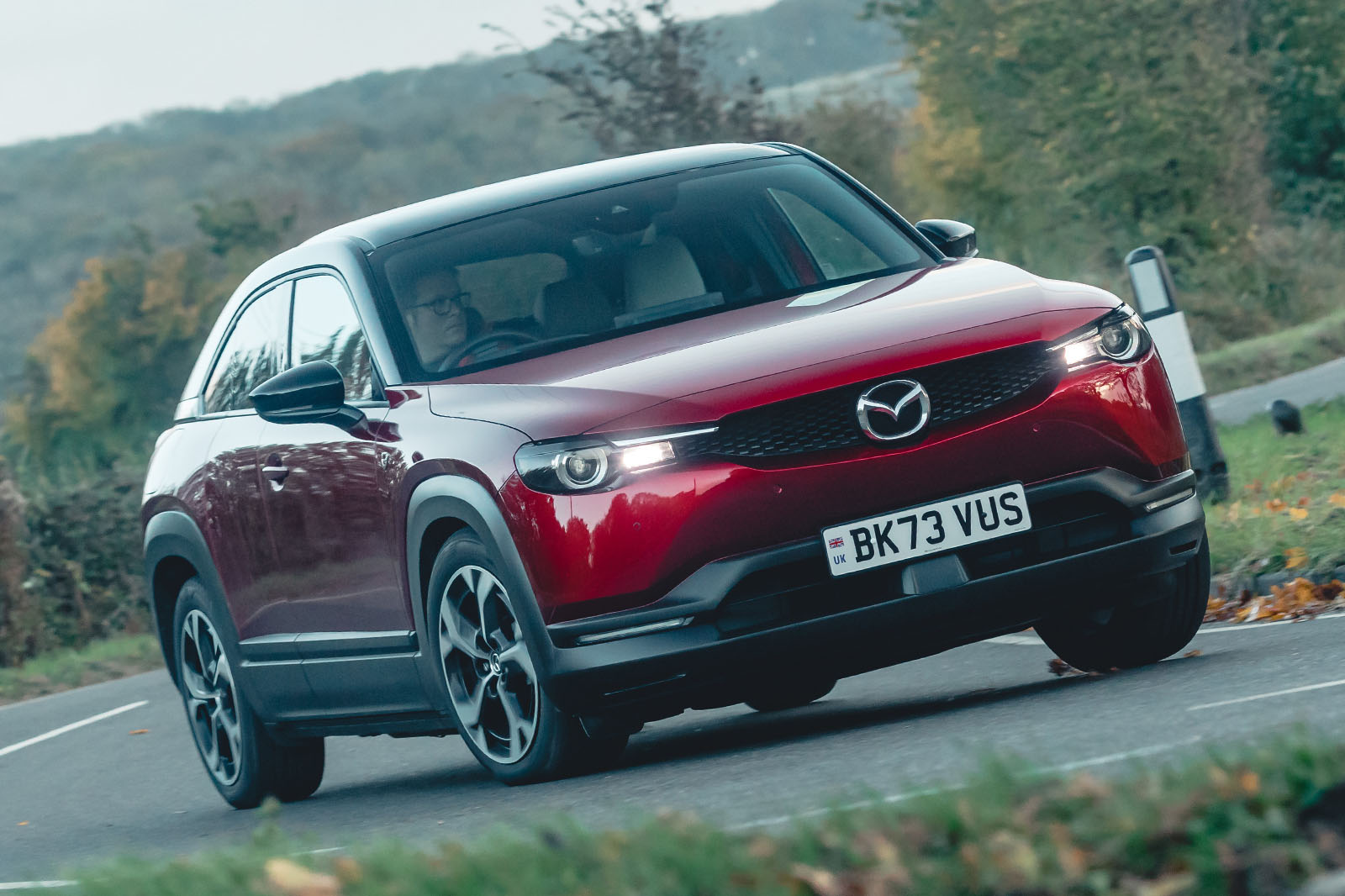
- Design6
- Interior8
- Performance7
- Ride & Handling7
- Costs5
Pros
Entertaining handling
Classy cabin
Strong refinement
Cons
Woefully short range
Cramped rear seats
Awkward suicide doors
Provided you’re not planning to do many high-mileage drives in your EV, the quirky Mazda MX-30 makes plenty of second-hand sense.
Even when new, this compact crossover had a paltry 124 miles of claimed range from its 35.5kWh battery, which today translates to around 100 miles of reliable range.
It doesn’t feel like the MX-30 really bites into hairpins, but grip and stability are good nonetheless.
Then there’s the rear-hinged ‘suicide’ rear doors, which are more of a gimmick than a practicality aid, plus rear-seat space is marginal for adults.
Yet for short hops or second-car duties, the MX-30’s incisive handling makes it one of the more engaging EVs to drive. It’s also well built and lavishly equipped.
Moreover, this misunderstood Mazda has suffered more from depreciation than small car alternatives, such as the Mini Electric, meaning a three-year-old example can be yours for little more than £10,000.
Read our Mazda MX-30 review
7. Nissan Leaf
7
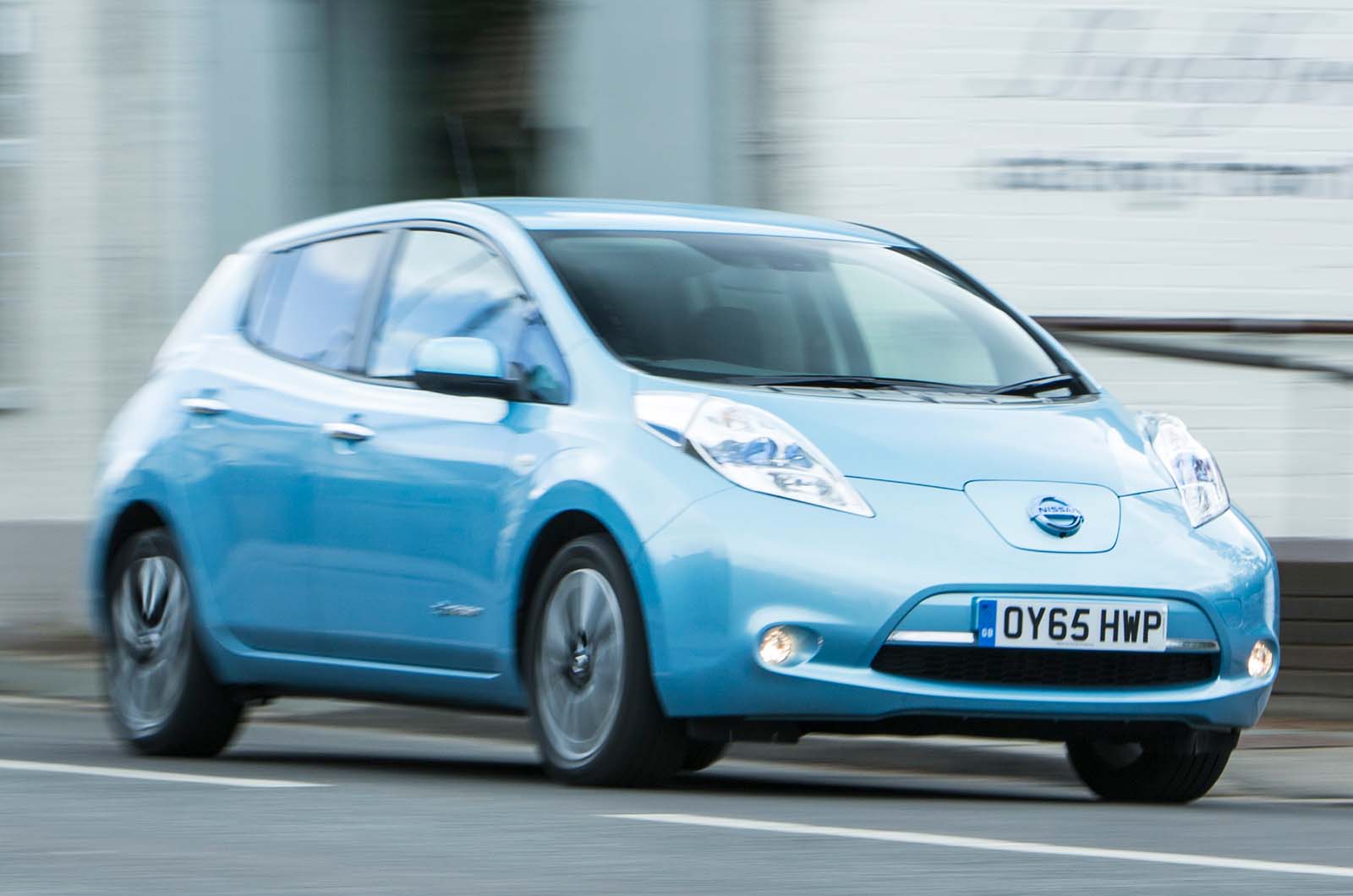
- Design8
- Interior7
- Performance7
- Ride & Handling7
- Costs8
Pros
Cheap
Plenty of choice
Cost-effective to maintain
Cons
Short range ties it to short journeys
Uninspiring drive
Limited peak charging rate
If you’re looking for the cheapest electric car on the second-hand market, the Nissan Leaf should be at the top of your shopping list.
The electric family car pioneer has been around for the best part of a decade and a half now, with the result that you can pay as little as £2000 for an early example.
The immediate torque and predictable power delivery makes the Leaf one of the best urban commuters around.
Of course, at this end of the market, you won’t get much range for your cash and examples fitted with a 24kWh battery deliver a realistic 80 miles of range (well down on the official 109 miles).
Yet treat the Leaf as a cheap commuter car or school-run hack and you will be laughing all the way to the bank.
Not only will fiill-ups cost you less than with an ICE alternative, but the Leaf is also proving to be a durable and robust long-term proposition, requiring only routine maintenance and the replacement of the usual consumables.
Read our Nissan Leaf review
Back to top
8. Hyundai Ioniq Electric
7
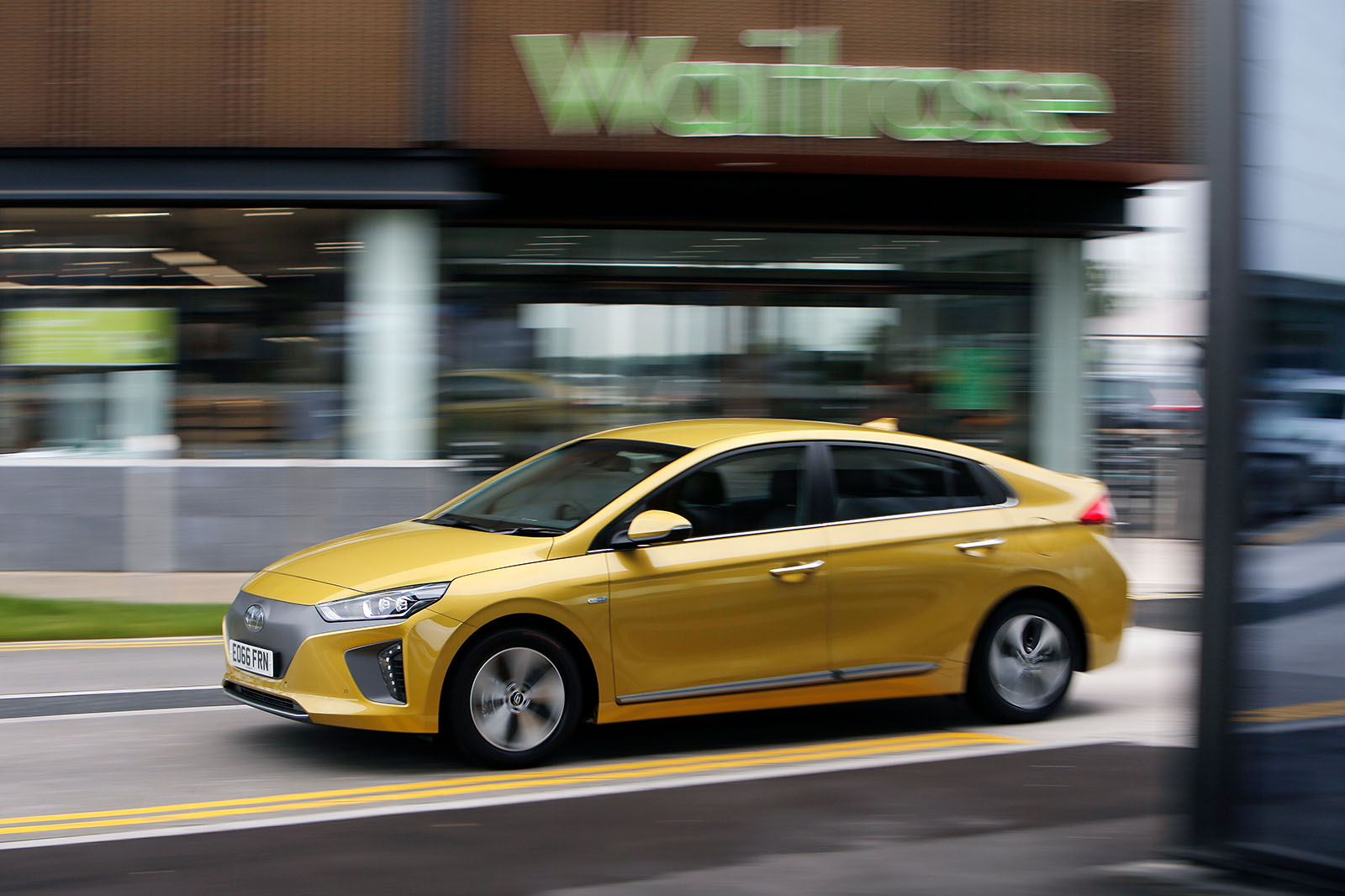
- Design7
- Interior8
- Performance7
- Ride & Handling7
- Costs8
Pros
Value for money
Easy to live with
Practical enough for a family of four
Cons
Not very exciting to drive
Range trails newer rivals’
Some electrical gremlins
Living in the shade of its more fashionable, more famous and younger namesake – the Hyundai Ioniq 5 – makes the Ioniq Electric a bit of a bargain buy.
It’s not the most glamorous or invigorating set of wheels you will ever buy, but as a sensible, low-cost and hassle-free runaround, it takes some beating.
The Ioniq’s instrumentation is clear, its driving position and seat are both good, its sat-nav system is okay and its visibility is reasonable.
The relatively modest 38.3kWh battery’s stamina is aided by excellent aerodynamics that allow this hatchback to squeeze a claimed 193 miles (expect around 165 miles day to day) from a charge, while Premium trim is very well equipped.
Just under £9000 will secure the keys to a 2020 example with around 50,000 miles on the clock.
That being said, you can bag a tidy Ioniq with a fair few miles on the clock for around £6000 if your budget is tight.
Read our Hyundai Ioniq Electric review
9. Volkswagen ID 3
7
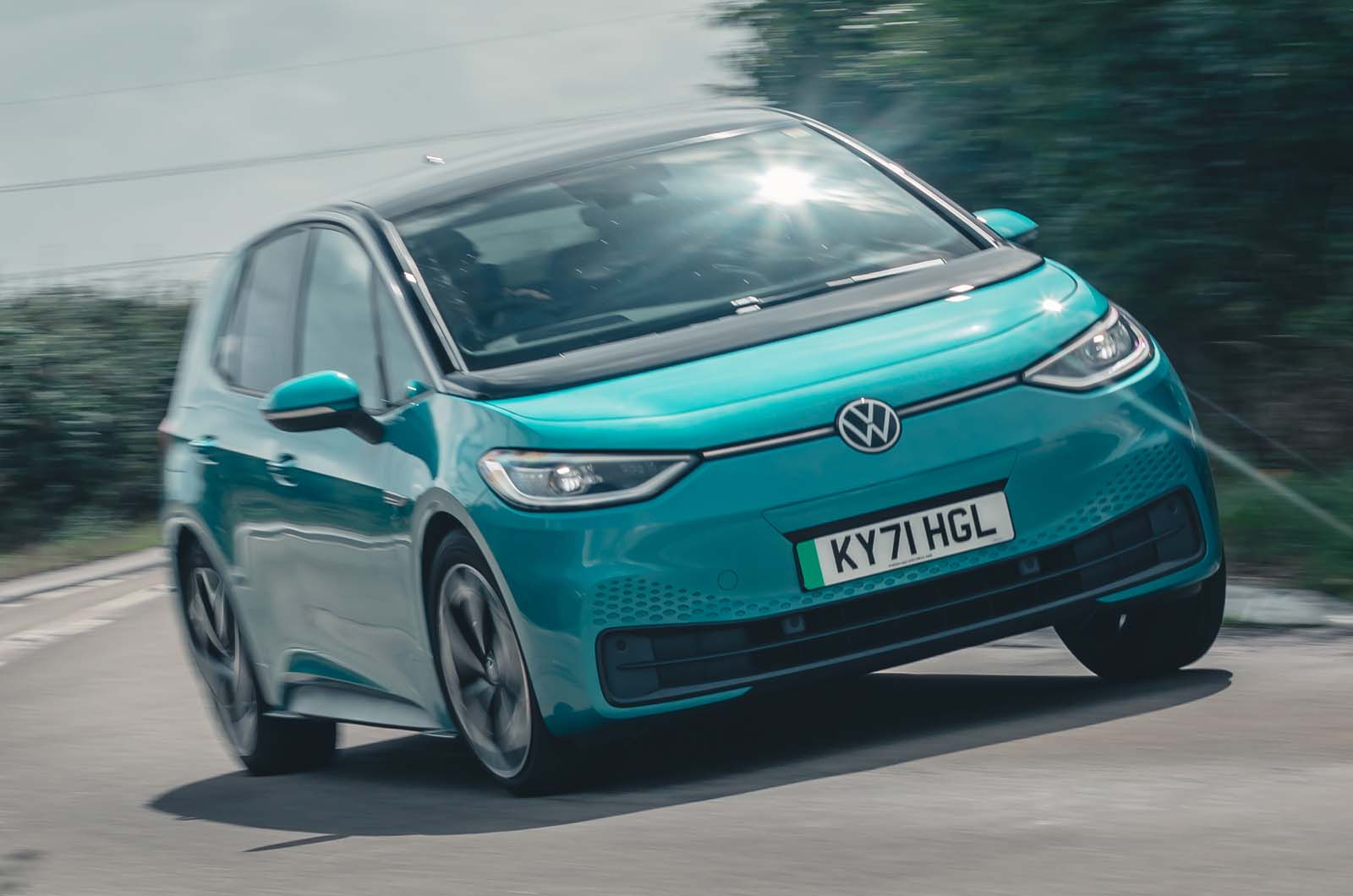
- Design9
- Interior8
- Performance8
- Ride & Handling7
- Costs8
Pros
Spacious, practical cabin
Decent real-world range
Broad mix of trims and batteries
Cons
Frustrating ergonomics
Firm low-speed ride
Touchscreen is hard to use when driving
With family car icons such as the Beetle and Golf on its books, Volkswagen knew its first bespoke EV hatchback had some big boots to fill.
And while the ID 3 probably won’t be held in such high regard as its ancestors, it makes a solid and sensible used choice.
The electronic management of the ID 3’s handling is really sophisticated, but it’s also permanent: there’s no dialling back or switching off the ESC. Would it be more fun if you could? I doubt it.
Being designed from the ground up as an EV using the brand’s MEB platform (rear-mounted motor and battery under the floor), the ID 3 is roomy and brisk, even in entry-level 168bhp guise.
It’s not quite as fun as its rear-drive layout might have you believe and some of the cabin ergonomics will make you want to set fire to the car (the unlit touch-sensitive temperature controls being the biggest faux pas), but for around £11,000 you can a three-year-old example with the smallest (58kWh) battery. That’s still good enough for a claimed 265 miles (roughly 230 miles in real-world use).
The bigger, 77kWh battery delivers a realistic 300 miles between top-ups, but currently commands a hefty ££5000-6000 premium, which means it doesn’t offer nearly as much value for money.
Read our Volkswagen ID 3 review
Back to top
10. Fiat 500e
7
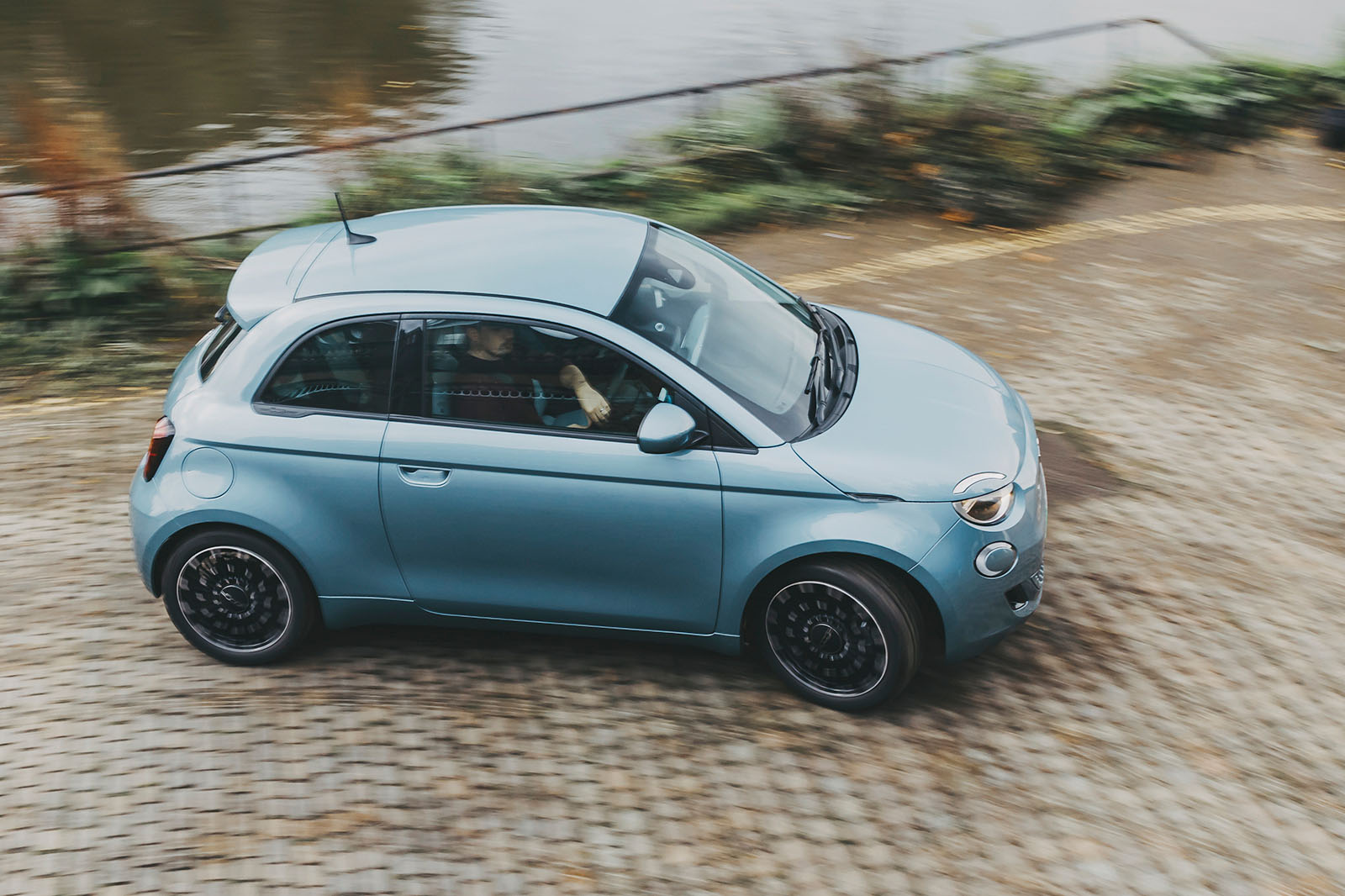
- Design9
- Interior6
- Performance9
- Ride & Handling8
- Costs8
Pros
Cheeky, retro-inspired looks
Fun-loving interior experience
Upmarket cabin with plenty of kit
Cons
Not much space inside, especially the back
Entry-level car has a short range
Small boot
Proof that the best things really do come in small packages, the pint-sized Fiat 500e wraps fun driving dynamics and low running costs in a stylish Latin wrapper.
Designed from the outset as an EV, this electric 500 packs all the retro visual charm of its ICE predecessor yet feels like a much more modern and upmarket proposition.
Notably for a small EV, the 500e has plenty of kerb and driver appeal. It’s fun at everyday speeds and can be hurled into corners without being overrun by the on-tap torque.
The 24kWh-battery version is best avoided because of its very limited range, so we would recommend spending a little extra (prices start at just over £10,000) on the 42kWh model, which has a claimed range of up to 199 miles – or 150 miles in the real world.
Regardless of battery size, you get traffic-dodging agility and surprisingly grown-up ride and refinement.
It’s at its best in the urban jungle and rear-seat space is best left to children or contortionists, but few EVs serve up as much everyday fun.



